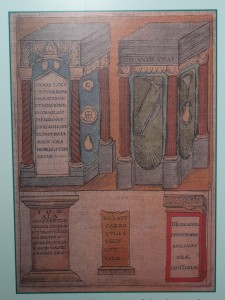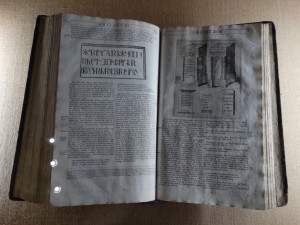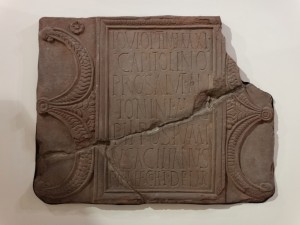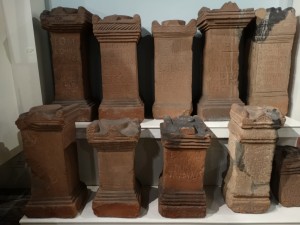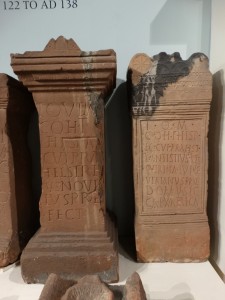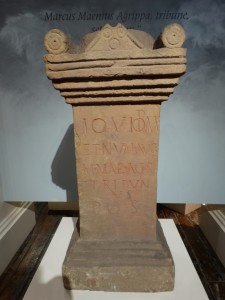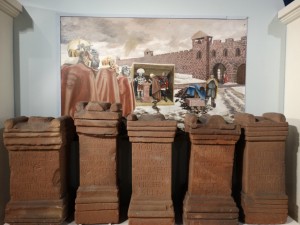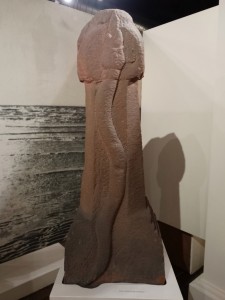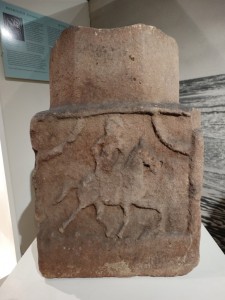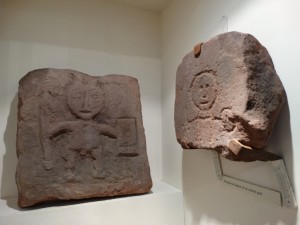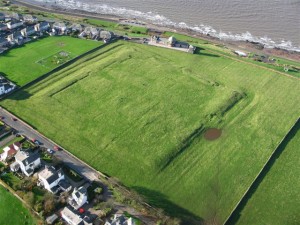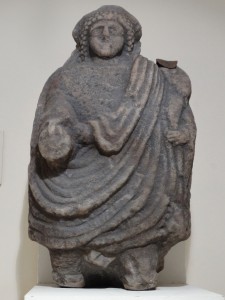After a Wall Walk and a church crawl we drove on to Maryport to go to the Senhouse Museum – website. There is also a page about the settlement here. The Hadrian’s Wall Trust produced a 2013 leaflet called Romans in Cumbria, well worth getting hold of – I found it in Carlisle Tourist Information Centre. The Trust was wound up in 2014 as it cost too much – website – again, (as in my last blog) I could have a rant.
The Museum is in a Victorian watch house, high above the shore and next to the Roman Fort. The fort is believed to have been a major supply base for the northern frontier. There must have been a port here, though its location has yet to be found. The collection was established by John Senhouse in the reign of Elizabeth I and first recorded in 1599 by William Camden in his Britannia. You can look William Camden up here. He is usually said to have been the first to write at length about the Wall, though I bought a lovely book from the museum’s excellent shop entitled Murus ille famosus (that famous wall); Depictions and Descriptions of Hadrian’s Wall before Camden, by William D. Shannon (Cumberland and Westmoreland Antiquarian and Archaeological Society, 2007).
Subsequent members of the Senhouse family continued to add to the collection and it is believed to be the oldest antiquarian collection in the country. In 1870 Humphrey Pocklington Senhouse made one of the most outstanding discoveries when he unearthed seventeen military altars from a series of pits adjacent to the fort. They were dedicated to Jupiter, king of the gods, by the commanders of the regiment garrisoned at the fort. It looks as if they were ritually buried – perhaps one each year – and they provide an insight into the multicultural nature of the Empire and the career paths of its senior officers and administrators. Officers who served here at Alauna came from Italy, Provence (southern France), Noricum (modern Austria), North Africa, and possibly Spain. Each officer seems to gave commanded the regiment for three to four years before moving on to a new posting.
Entry to the museum is a very reasonable £4 and the lady in charge was very friendly. There were not a huge number of visitors – just the two of us – so she spring-cleaned around us. There is a leaflet which translates all the altars – I think there are now 23 of them – but here is just one of them (for the one above “To Jupiter, best, greatest, Capitolinus, for the welfare of Antoninus Augustus Pius, Postumius Acilianus, prefect of the First Cohort of Dalmatians [set this up]”.
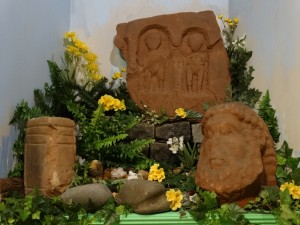 This stone shows the only known representation of a fort gateway.
This stone shows the only known representation of a fort gateway.
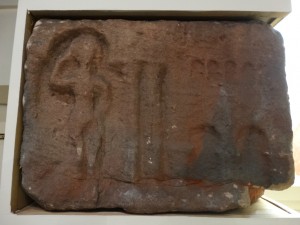 The Serpent Stone was recently described in a video produced by Melvyn Bragg in support of this country’s small museums – you can see it here. “There’s a certain stone with a Celtic head on one side and a serpent on the other. Another serpent winds its way around a spectacularly engorged member” says Lord Bragg. Well, now you know!
The Serpent Stone was recently described in a video produced by Melvyn Bragg in support of this country’s small museums – you can see it here. “There’s a certain stone with a Celtic head on one side and a serpent on the other. Another serpent winds its way around a spectacularly engorged member” says Lord Bragg. Well, now you know!
Nice library here too – I could spend a happy few hours sat reading.
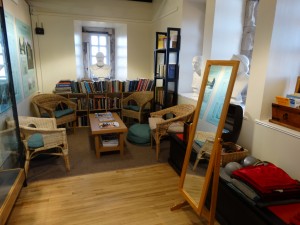 We climbed up the watchtower and had a good view. Excavation has continued at the fort over the last few years – website. I hope no one minds me including the wonderful drawing of the settlement – if you do, please contact me and I will take it down immediately.
We climbed up the watchtower and had a good view. Excavation has continued at the fort over the last few years – website. I hope no one minds me including the wonderful drawing of the settlement – if you do, please contact me and I will take it down immediately.
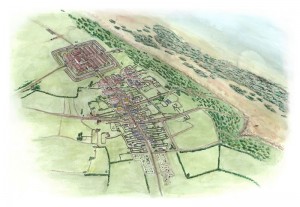 The aerial photo comes from this site.
The aerial photo comes from this site.
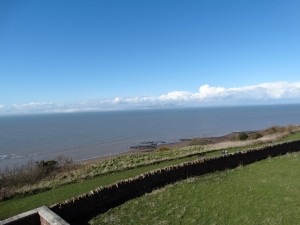
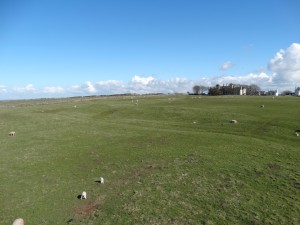 It has been a lovely day to explore this end of the Wall and its assorted fortifications.
It has been a lovely day to explore this end of the Wall and its assorted fortifications.


